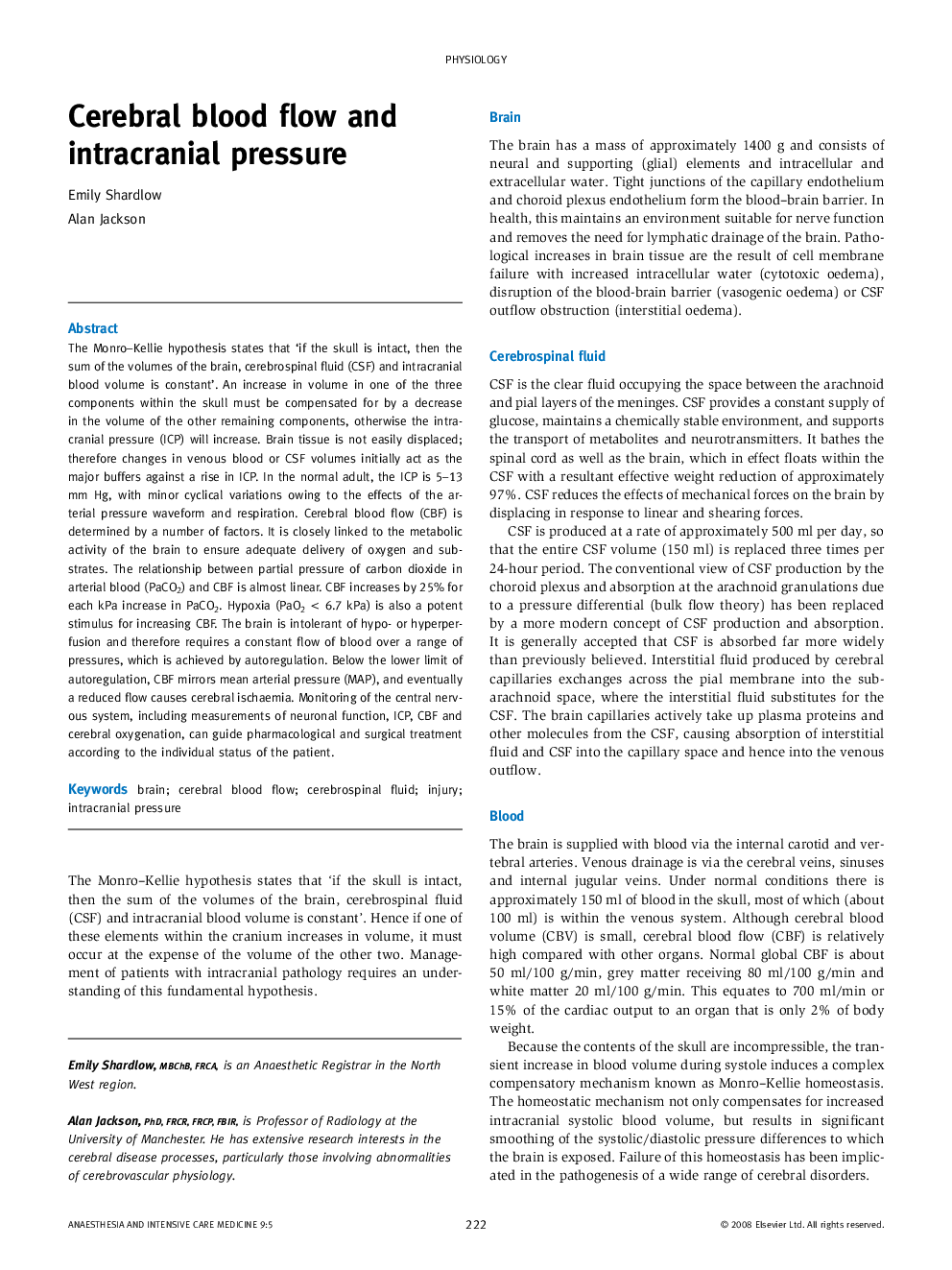| Article ID | Journal | Published Year | Pages | File Type |
|---|---|---|---|---|
| 2743782 | Anaesthesia & Intensive Care Medicine | 2008 | 4 Pages |
The Monro–Kellie hypothesis states that ‘if the skull is intact, then the sum of the volumes of the brain, cerebrospinal fluid (CSF) and intracranial blood volume is constant’. An increase in volume in one of the three components within the skull must be compensated for by a decrease in the volume of the other remaining components, otherwise the intracranial pressure (ICP) will increase. Brain tissue is not easily displaced; therefore changes in venous blood or CSF volumes initially act as the major buffers against a rise in ICP. In the normal adult, the ICP is 5–13 mm Hg, with minor cyclical variations owing to the effects of the arterial pressure waveform and respiration. Cerebral blood flow (CBF) is determined by a number of factors. It is closely linked to the metabolic activity of the brain to ensure adequate delivery of oxygen and substrates. The relationship between partial pressure of carbon dioxide in arterial blood (PaCO2) and CBF is almost linear. CBF increases by 25% for each kPa increase in PaCO2. Hypoxia (PaO2 < 6.7 kPa) is also a potent stimulus for increasing CBF. The brain is intolerant of hypo- or hyperperfusion and therefore requires a constant flow of blood over a range of pressures, which is achieved by autoregulation. Below the lower limit of autoregulation, CBF mirrors mean arterial pressure (MAP), and eventually a reduced flow causes cerebral ischaemia. Monitoring of the central nervous system, including measurements of neuronal function, ICP, CBF and cerebral oxygenation, can guide pharmacological and surgical treatment according to the individual status of the patient.
